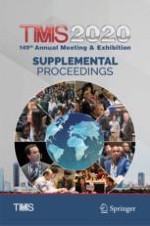2020 | OriginalPaper | Chapter
Active Metamaterial Skins for Friction Coefficient Control
Authors : Yujin Park, Kenneth J. Loh
Published in: TMS 2020 149th Annual Meeting & Exhibition Supplemental Proceedings
Publisher: Springer International Publishing
Activate our intelligent search to find suitable subject content or patents.
Select sections of text to find matching patents with Artificial Intelligence. powered by
Select sections of text to find additional relevant content using AI-assisted search. powered by
